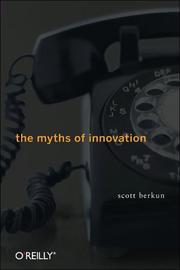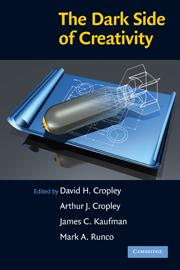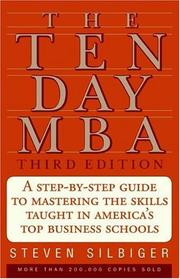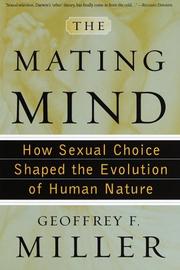Principle
This page gather notes on scanning process that I (try to always) undertake before actually reading the book.
The goal is to insure that the book is what the title and the table of content suggest and not just publisher good marketing.
If I think the book is what will help me progress in my current problematic (see Research goal or Analysis
or Analysis ) it will probably move to my Reading notes) and be listed in my Current Reading.
) it will probably move to my Reading notes) and be listed in my Current Reading.
Most books listed here come from my Bibliography and Personal Information Stream.
and Personal Information Stream.
Negative reading
If you are able to figure out faster or more than reading the book then you should actually not read it (obviously if it is false, you should not read it either).
Reading, after a certain age, diverts the mind too much from its creative pursuits. Any man who reads too much and uses his own brain too little falls into lazy habits of thinking.
Albert Einstein
Listing
- The Economics of Creativity: Ideas, Firms and Markets edited by Thierry Burger-Helmchen, Routledge January 2013
- motivated by the thought that economical constraints are key to artificial creativity
- the same way that availability of resources matter in biological evolution
- Feeling Beauty : The Neuroscience of Aesthetic Experience by G. Gabrielle Starr, The MIT Press 2013
The Happiness of Pursuit by Shimon Edelman, Basic Books 2012
- Epistemology of the Cell: A Systems Perspective on Biological Knowledge by Edward R. Dougherty and Michael L. Bittner, Wiley-IEEE Press August 2011
- The Origins of Evolutionary Innovations: A Theory of Transformative Change in Living Systems by Andreas Wagner, Oxford University Press September 2011
- Nature of Computation by Cristopher Moore and Stephan Mertens, Oxford University Press 2011
- Information Arts: Intersections of Art, Science, and Technology by Stephen Wilson MIT Press/Leonardo Books 2002
- Code/Space - Software and Everyday Life by Rob Kitchin and Martin Dodge, The MIT Press March 2011
- The Net Delusion Evgeny Morozov
- The Pinball Effect: How Renaissance Water Gardens Made the Carburetor Possible - and Other Journeys by James Burke Back Bay Books 1997
- The Development of the laboratory : essays on the place of experiment in industrial civilization by Frank A. J. L. James, American Institute of Physics 1989
- Darwin's Conjecture, The Search for General Principles of Social and Economic Evolution by Geoffrey M. Hodgson and Thorbjørn Knudsen, The University of Chicago Press 2010
- Cooking For Geeks by Jeff Potter, O'Reilly 2010
- iamgeekfit For grad students, researchers, academics and related who want to get fit, healthy, well and stay that way.
- City of Bits by William J. Mitchell, MIT Press 1996
- Knowledge-Intensive Entrepreneurship and Innovation Systems: Evidence from Europe edited by Franco Malerba, Routledge March 2010
- Science from Fisher Information by B. Roy Frieden, Cambridge University Press 2004
- Fluid Concepts and Creative Analogies: Computer Models of the Fundamental Mechanisms of Thought by Douglas Hofstadter, Basic Books 1995
- Philosophy and Engineering: An Emerging Agenda edited by Ibo van de Poel and David E. Goldberg, Springer 2010
- The Entrepreneurial Engineer by David E. Goldberg, Wiley 2006
- The Calculus of Consent
 : Logical Foundations of Constitutional Democracy by James M. Buchanan and Gordon Tullock, 1962
: Logical Foundations of Constitutional Democracy by James M. Buchanan and Gordon Tullock, 1962
- Toward Replacement Parts for the Brain, MIT Press 2005
- The Knowing-Doing Gap: How Smart Companies Turn Knowledge Into Action by Jeffrey Pfeffer and Robert I. Sutton, authors of The Knowing-Doing Gap, HBS Press 1999
- discovered thanks to Far Beyond Smartphones: Lessons From Disruptive Technology, Open collaboration, and Breakthrough Mobile products by David Wood
- Quantum Computer Science by David Mermin, Cambridge University Press 2007
- N. David Mermin Laboratory of Atomic & Solid Physics Cornell University
- Instruments scientifiques à travers l'histoire by Hébert Elisabeth, Éditions Ellipses 2004
- Sur le tissage des connaissances by Mioara Mugur-Schächter, Hermes 2006
- "Le Tissage des Connaissances" par Mioara Mugur-Schächter 2006
- Page Web de Mioara Mugur-Schachter
- Notes de Lectures MCX by Jean-Louis Le Moigne 2006
- Wikinomics : How Mass Collaboration Changes everything by Don Tapscott and Anthony D. Williams, 2006
- Wikinomics Inspired by the best selling book Wikinomics by Don Tapscott and Anthony Williams.
- The Fourth Paradigm: Data-Intensive Scientific Discovery Microsoft Research
- Snowmelt runoff, The Fourth Paradigm, and the end of stationarity by Jeff Dozier, EE380, Stanford University April 2010
- see Seedea:Seedea/AImatrix
 Seedea:Seedea/DATAmatrix
Seedea:Seedea/DATAmatrix
- iBrain: Surviving the Technological Alteration of the Modern Mind by Gary Small and Gigi Vorgan, Harper&Collins 2008
- Your Brain At Work by David Rock seems much better based on his Google Tech Talk
- Probability Theory - The Logic of Science by E. T. Jaynes- ISBN 9780521592710 - Cambridge University Press 2003
- Edwin Thompson Jaynes - July 5, 1922 - April 30, 1998 by G. Larry Bretthorst
- Networks, Crowds, and Markets: Reasoning About a Highly Connected World by David Easley and Jon Kleinberg, Cambridge University Press 2010
- Evolution of Networks: From Biological Nets to the Internet and WWW by S. N. Dorogovtsev and J. F. F. Mendes, OUP 2003
- Closure: a story of everything by Hilary Lawson, Routledge, 2001
- Wikipedia:Closure (philosophy)

- Wikipedia:Closure: A Short History of Everything

- Hilary Lawson discusses the concept of closure, The Failure of Reason, The Institute of Art and Ideas, January 2010
- The Innovator's Dilemma by Clayton Christensen, Collins Business Essentials 2003
- Endless Universe: Beyond the Big Bang by Paul J. Steinhardt and Neil Turok, DoubleDay 2007
- Mind, Matter and Quantum Mechanics Henry P. Stapp, Springer 2009
- Evolution in Four Dimensions by Eva Jablonka and Marion J. Lamb, MIT Press 2005
- or The Triple Helix : Gene, Organism, and Environment by Richard Lewontin, Harvard University Press 2000
- The Possibility of Knowledge by Quassim Cassam, Oxford University Press 2007
- Activism!: Direct Action, Hacktivism and the Future of Society by Tim Jordan, Reaktion Books, 2002
- or his more recent 2008 Hacking: digital media and technological determinism
- both discovered after reading Hacking and power: Social and technological determinism in the digital age
- Zann Gill's If Microbes begat Mind origins of life & emergence of intelligence and What Daedalus told Darwin
- email to request more information sent the 1st of August 2009
- asked http://www.quora.com/When-and-how-is-Zann-Gills-book-going-to-be-published?
- The Evolution of Individuality by Leo W. Buss 2006 (reprint from 1988)
- discussion on it by David B. Resnik in Biology and Philosophy 1992
- Cyberabad Days by Ian McDonald 2009
Current scannings
Toward Replacement Parts for the Brain
Toward Replacement Parts for the Brain : Implantable Biomimetic Electronics as Neural Prostheses edited by Theodore W. Berger and Dennis L. Glanzman - ISBN 0262025779 - MIT Press 2005
- introduction
- structure, figures and and conclusion of each chapter
Part III Neuron/Silicon Interfaces
- Chapter 9 : Long-Term Functional Contact between Nerve Cell Networks and Microelectrode Arrays
- Chapter 10 : Building Minimalistic Hybrid Neuroelectric Devices
- Chapter 11 : The Biotic/Abiotic Interface: Achievements and Foreseeable Challenges
Part VI Hardware implementations
- Chapter 12 : Brain-Implantable Biomimetic Electronics as a Neural Prosthesis for Hippocampal Memory Function
- proposing "The <<Dynamic Synapse>> Neural Network Architecture" with multiple outputs
- see also hypergraph used in AGI including OpenCOG
- defining cytoarchitecture
- "implementation of biologically realistic neural network models in VLSI for miniaturization"
- Chapter 14 Hybrid Electronic/Photonic Multichip Modules for Vision and Neural Prosthetic Applications
- usage of VLSI too but also multiple quantum wells (MQW) and vertical cavity surface-emitting lasers (VCSELs)
- "how best to structure the architecture to make optimal use of this unusual nature/nurture admixture, in which two separate interpenetrating network topologies separately implement the a priori and a posteriori weights."
- "The ultimate challenge will be the development of electrical power cells capable of tapping into the electrochemistry of the brain itself, so that e‰cient electrical conversion can be provided at the implant site using only local metabolic processes."
- Chapter 15 : Reconfigurable Processors for Neural Prostheses
- Field-Programmable Gate Arrays (FPGA)
- Optically Programmable Gate Array (OPGA)
- "device in which the computation is still performed by programmable logic blocks and interconnects as in the conventional FPGA, but the configuration data are brought into the chip optically." lowering the configuration time
- using holograms, cf visit to MIT Museum
- chips designed by Photobit
- Photobit.com now redirects to Aptina.com, no mention of OPGA though
- Optically Programmable FPGA Systems at Caltech CNSE, with Photobit but also Holoplex and Honeywell
See also
The Innovator's Dilemma
The Innovator's Dilemma by Clayton Christensen - ISBN - Collins Business Essentials 2003
Skimming
- Read until chapter 3, page 69.
- chapter 11 The Dilemnas of Innovation: A Summary
- "Although the mortality rate for ideas about disruptive technologies is high, the overall business of creating new markets for disruptive technologies need not to be inordinately risky. Managers who don't bet the farm on their first idea, who leave room to try, fail, learn quickly, and try again, can succeed at developing the understanding of customers, markets, and technology needed to commercialize disruptive innovations." (p260)
See also
Legal Strategies
Skimming
Legal Strategies : How Corporations Use Law to Improve Performance
- "legally hacking the system"
- read the introduction/conclusion of most chapters
- Authors make the distinction between actual law is (imperfect) against what it should be (according to the legislator) and how one could exploit the gap created.
- new concepts (to add to Newconcepts page)
- forum shopping (law) = http://en.wikipedia.org/wiki/Forum_shopping
- parasitic innovation (law) = ?
- legal astuteness = legal strategy is increasingly concerned with identifying ingenious capacity and dexterity in business and law, rather than basic business/law strategic competencies or skills.
- cf Constance E. Bagley in Legal Strategies : How Corporations Use Law to Improve Performance, Springer January 2010
See also
Evolution in Four Dimensions
Evolution in Four Dimensions by Eva Jablonka and Marion J. Lamb, MIT Press 2005
Skimming
- basic claim : "biological thinking about heredity and evolution is undergoing a revolutionary change. [...]
- there is more to heredity than genes;
- some hereditary variations are nonrandom in origin;
- some acquired information is inherited;
- evolutionary change can result from instruction as well as selection." (p1)
- "The challenge it offers is not to Darwin’s theory of evolution through natural selection, but to the prevalent gene-based unidimensional version of it." (p4)
- Part I : the first dimension of heredity and evolution, the genetic system. (~105 pages, 28%)
- Chapter 1
- table 1.1 (p39) : summarized the various historical transformations of Darwin’s theory
- Part II : the other dimensions of heredity. (120 pages, 30%)
- "In terms of the genotype/phenotype analogy, the recording and broadcasting systems transmit the 'phenotypes' of the pieces, rather than the 'genotypic' instructions in the score. [...] The recording-broadcasting transmission system is based on a completely different technology from that of copying of the score, and likewise the heredity systems that we are going to discuss in the next three chapters are completely different from the DNA system."(p110)
- Between the Acts: summary and comparison of the salient properties of the four systems (8 pages, 2%)
- part III : put Humpty Dumpty together again. (155 pages, 40%)
-
See also
Past scannings
Accepted
Discarded
- Protocells: Bridging Nonliving and Living Matter, March 2009
- very interesting models and relation to cognition but lack of basis in bio-chemistry made it currently out of reach
- The Self-Made Tapestry, June 2009
- unifying view across scale and usage of fractals made it very appealing yet too far from my current problematic and probably reading the original work by d'Arcy's on Growth and Form first could be more valuable
- Bio-mechanisms of Swimming and Flying, June 2009
- too far from provide anything really valuable to improve my swimming practice, discussion and re-enforcing basis in physics and dynamics would be more fruitful
Method
- find book
- scan it
- rank it
- eventually based on expected learning return on investment for current or upcoming tasks
- currently ranked by date of addition (which is redbad)
- explain why it would be interesting/not interesting
- move from skimming notes to Reading notes
To do
Other read books linking to the ScanningNotes page :
Back to the Menu
 Fabien Benetou's PIM
Fabien Benetou's PIM













